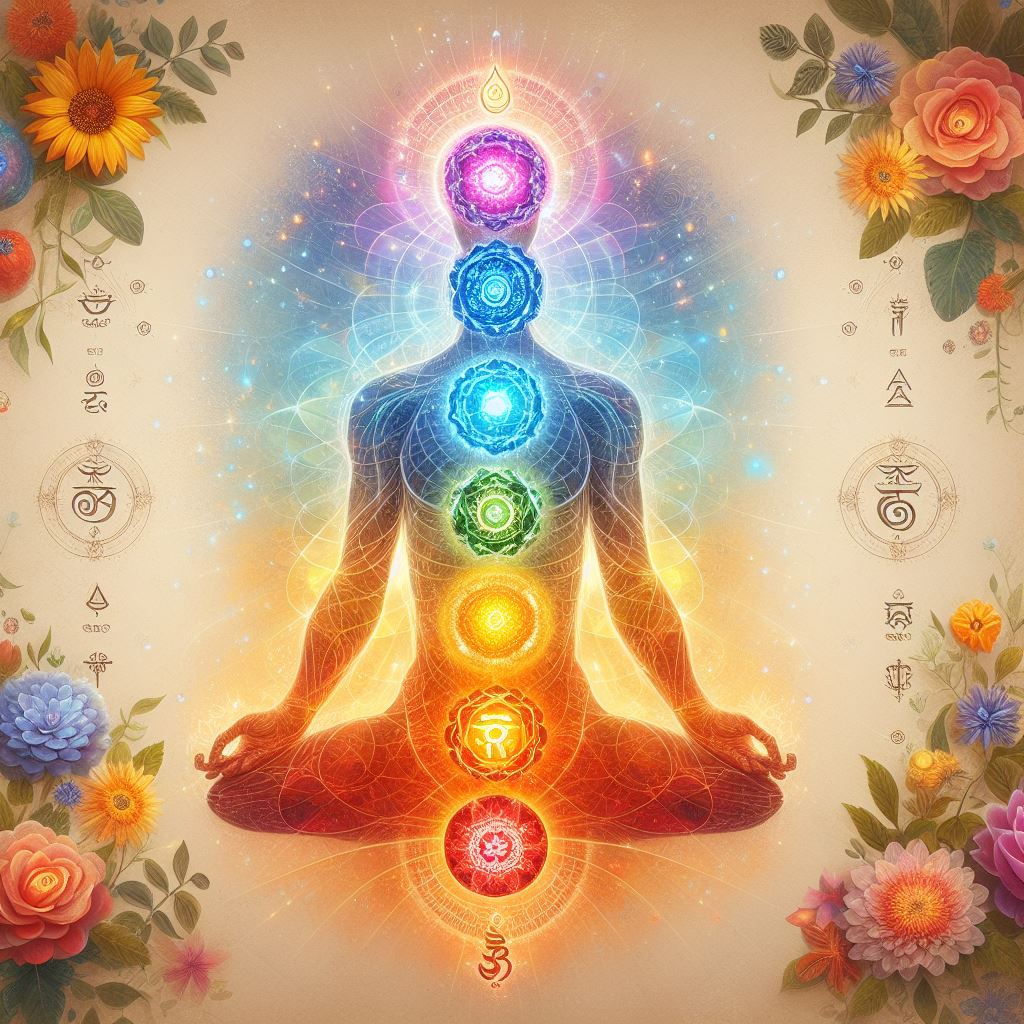Exploring the Energy Centers of the Body
Introduction: Chakras are subtle energy centers within the human body that play a crucial role in our physical, mental, and spiritual well-being. In this article, we delve into the ancient wisdom of chakras, exploring their significance, functions, and how they influence our overall health and vitality.
Chakras are energy centers located within the subtle body, according to various spiritual traditions, particularly those in Hinduism, Buddhism, and yoga. There are typically seven main chakras aligned along the spine, each associated with different aspects of physical, emotional, and spiritual well-being. These chakras are believed to spin like wheels, regulating the flow of energy (prana or chi) throughout the body.
Balancing and aligning the chakras is believed to promote overall health and well-being, harmonizing the flow of energy within the body and fostering a sense of wholeness and vitality. Various practices, such as meditation, yoga, breathwork, and energy healing, are used to activate and balance the chakras, facilitating personal growth and spiritual development.

The Concept of Chakras: Derived from ancient Indian spiritual traditions, chakras are believed to be spinning wheels or vortexes of energy located along the subtle energy channels, known as nadis, within the body. Each chakra corresponds to specific organs, glands, psychological functions, and aspects of consciousness.
The Seven Main Chakras:
-
Root Chakra (Muladhara): Located at the base of the spine, the root chakra is associated with our sense of safety, security, and survival instincts.
-
Sacral Chakra (Svadhisthana): Situated in the lower abdomen, the sacral chakra governs our emotions, creativity, and sexual energy.
-
Solar Plexus Chakra (Manipura): Found in the upper abdomen, the solar plexus chakra influences our self-esteem, personal power, and willpower.
-
Heart Chakra (Anahata): Located in the center of the chest, the heart chakra governs love, compassion, and emotional healing.
-
Throat Chakra (Vishuddha): Situated at the throat, the throat chakra is associated with communication, self-expression, and authenticity.
-
Third Eye Chakra (Ajna): Found in the center of the forehead, between the eyebrows, the third eye chakra relates to intuition, insight, and spiritual awareness.
-
Crown Chakra (Sahasrara): Located at the top of the head, the crown chakra represents our connection to higher consciousness, spirituality, and divine wisdom.
Balancing and Aligning Chakras: When chakras are balanced and aligned, energy flows freely throughout the body, promoting physical health, emotional stability, and spiritual growth. Various practices, such as meditation, yoga, breathwork, sound therapy, and energy healing, can help cleanse, activate, and harmonize the chakras, restoring balance and vitality.
Signs of Imbalanced Chakras: Imbalances in the chakras can manifest as physical ailments, emotional disturbances, and psychological issues. Common signs of imbalanced chakras include chronic pain, fatigue, anxiety, depression, and difficulties in relationships. By identifying and addressing these imbalances, individuals can promote holistic healing and well-being.
Incorporating Chakra Work into Daily Life: Integrating chakra work into daily life involves cultivating awareness of the subtle energy centers and adopting practices that support their health and vitality. This may include mindfulness meditation, yoga poses targeting specific chakras, affirmations, visualization, and lifestyle adjustments that promote overall balance and harmony.
Conclusion: Chakras offer a profound framework for understanding the interconnectedness of mind, body, and spirit and for cultivating holistic well-being. By exploring and working with the chakras, individuals can tap into their innate potential for healing, self-discovery, and spiritual evolution, ultimately leading to greater health, happiness, and fulfillment.